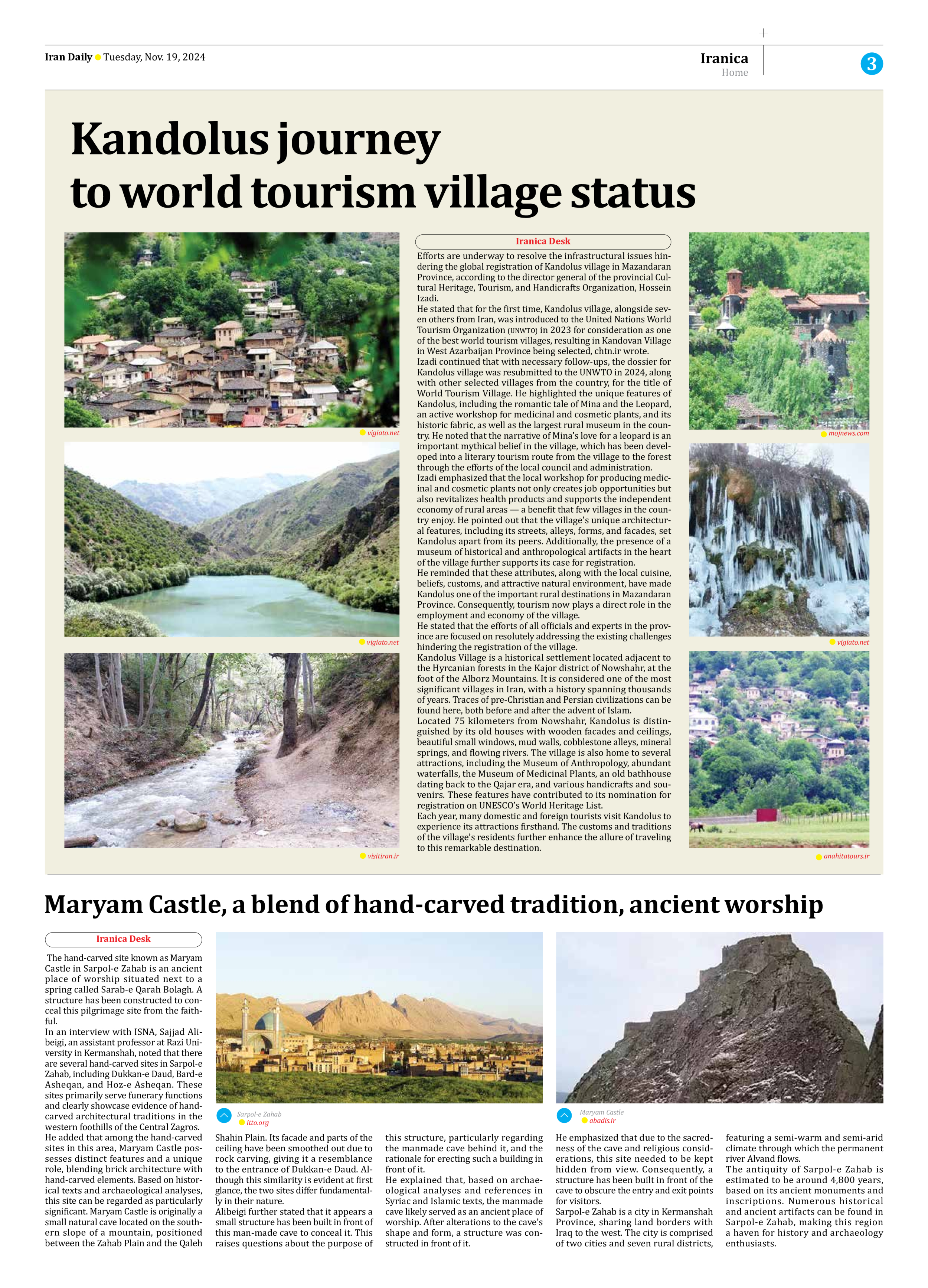
Maryam Castle, a blend of hand-carved tradition, ancient worship
The hand-carved site known as Maryam Castle in Sarpol-e Zahab is an ancient place of worship situated next to a spring called Sarab-e Qarah Bolagh. A structure has been constructed to conceal this pilgrimage site from the faithful.
In an interview with ISNA, Sajjad Alibeigi, an assistant professor at Razi University in Kermanshah, noted that there are several hand-carved sites in Sarpol-e Zahab, including Dukkan-e Daud, Bard-e Asheqan, and Hoz-e Asheqan. These sites primarily serve funerary functions and clearly showcase evidence of hand-carved architectural traditions in the western foothills of the Central Zagros.
He added that among the hand-carved sites in this area, Maryam Castle possesses distinct features and a unique role, blending brick architecture with hand-carved elements. Based on historical texts and archaeological analyses, this site can be regarded as particularly significant. Maryam Castle is originally a small natural cave located on the southern slope of a mountain, positioned between the Zahab Plain and the Qaleh Shahin Plain. Its facade and parts of the ceiling have been smoothed out due to rock carving, giving it a resemblance to the entrance of Dukkan-e Daud. Although this similarity is evident at first glance, the two sites differ fundamentally in their nature.
Alibeigi further stated that it appears a small structure has been built in front of this man-made cave to conceal it. This raises questions about the purpose of this structure, particularly regarding the manmade cave behind it, and the rationale for erecting such a building in front of it.
He explained that, based on archaeological analyses and references in Syriac and Islamic texts, the manmade cave likely served as an ancient place of worship. After alterations to the cave’s shape and form, a structure was constructed in front of it.
He emphasized that due to the sacredness of the cave and religious considerations, this site needed to be kept hidden from view. Consequently, a structure has been built in front of the cave to obscure the entry and exit points for visitors.
Sarpol-e Zahab is a city in Kermanshah Province, sharing land borders with Iraq to the west. The city is comprised of two cities and seven rural districts, featuring a semi-warm and semi-arid climate through which the permanent river Alvand flows.
The antiquity of Sarpol-e Zahab is estimated to be around 4,800 years, based on its ancient monuments and inscriptions. Numerous historical and ancient artifacts can be found in Sarpol-e Zahab, making this region a haven for history and archaeology enthusiasts.







